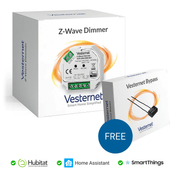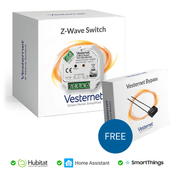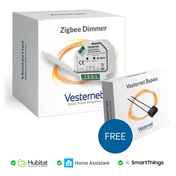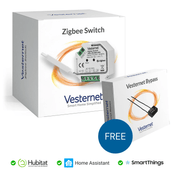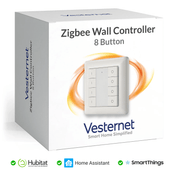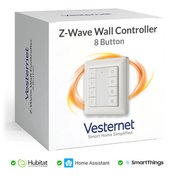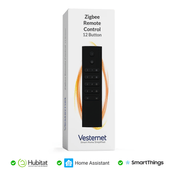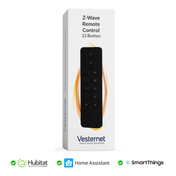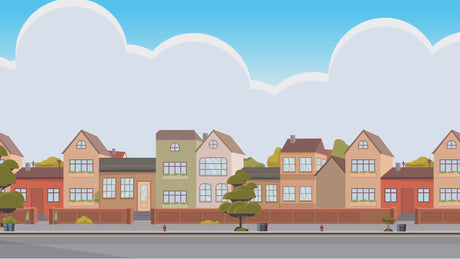A comprehensive guide to smart home terms, automation glossary, and IoT definitions for modern homeowners
The smart home revolution has transformed how we interact with our living spaces, bringing unprecedented convenience, efficiency, and control to everyday life. However, navigating the complex landscape of smart home technology can feel overwhelming, particularly when faced with an ever-expanding vocabulary of technical terms, protocols, and concepts that seem to change as rapidly as the technology itself.
Whether you're a newcomer exploring your first smart home device or an experienced enthusiast looking to expand your system, understanding the terminology is crucial for making informed decisions about your home automation investments. From fundamental concepts like wireless protocols and device types to cutting-edge developments in artificial intelligence and interoperability standards, the smart home ecosystem encompasses a vast array of technologies that work together to create truly intelligent living environments.
This comprehensive glossary serves as your definitive guide to smart home terminology, providing clear, practical definitions for over 200 essential terms that every smart home enthusiast should understand. We've organised these terms not just alphabetically, but by functional categories to help you grasp how different technologies work together to create seamless automation experiences.
The smart home market has evolved dramatically since its early days of simple remote-controlled devices. Today's intelligent homes integrate sophisticated technologies including machine learning algorithms that adapt to your daily routines, mesh networking protocols that ensure reliable communication across your entire property, and universal standards that enable devices from different manufacturers to work together harmoniously. Understanding these concepts empowers you to design, implement, and optimise smart home systems that truly enhance your quality of life whilst delivering genuine value and convenience.
Understanding Smart Home Fundamentals
Before diving into specific terminology, it's essential to understand the foundational concepts that underpin all smart home technology. At its core, a smart home is a network of interconnected devices that can communicate with each other and be controlled remotely, either through dedicated applications, voice commands, or automated routines based on predetermined conditions or learned behaviours.
The modern smart home operates on several key principles that distinguish it from traditional home automation systems. Connectivity forms the backbone of any smart home, enabling devices to communicate through various wireless protocols such as Wi-Fi, Zigbee, Z-Wave, or the emerging Matter standard. This connectivity allows for interoperability, where devices from different manufacturers can work together seamlessly, creating unified experiences rather than isolated device silos.
Intelligence represents another crucial aspect, where systems learn from user behaviour patterns and environmental conditions to make autonomous decisions that enhance comfort, security, and efficiency. This intelligence manifests through features like adaptive lighting that adjusts based on time of day and occupancy, heating systems that pre-warm rooms before you arrive home, or security systems that distinguish between family members and potential intruders. Modern smart thermostats exemplify this intelligence by learning your daily routines and automatically adjusting temperature settings to optimise both comfort and energy efficiency.
Scalability ensures that smart home systems can grow and evolve with changing needs and advancing technology. A well-designed smart home infrastructure allows for easy addition of new devices and capabilities without requiring complete system overhauls. This scalability is particularly important given the rapid pace of innovation in smart home technology, where new device categories and capabilities emerge regularly.
The user experience encompasses how homeowners interact with their smart home systems, from initial setup and configuration to daily operation and maintenance. Modern smart homes prioritise intuitive interfaces, whether through smartphone applications, voice assistants, or automated routines that require minimal user intervention. The goal is to make advanced technology feel natural and effortless rather than complex and burdensome.
Core Technologies and Protocols
Understanding the underlying technologies that power smart homes is essential for making informed decisions about device compatibility, system reliability, and future expansion possibilities. The smart home ecosystem relies on several key technological foundations that work together to create seamless automation experiences.
Wireless Communication Protocols form the nervous system of smart homes, enabling devices to communicate reliably across your property. Wi-Fi remains the most familiar protocol, offering high bandwidth and direct internet connectivity, making it ideal for devices requiring substantial data transfer such as security cameras, streaming devices, and smart displays. However, Wi-Fi's higher power consumption makes it less suitable for battery-powered sensors and devices that need to operate for months or years without battery replacement.
Mesh Networking Technologies like Zigbee and Z-Wave address Wi-Fi's limitations by creating self-healing networks where each device acts as a repeater, extending range and improving reliability. These protocols use lower power consumption, enabling battery-powered devices to operate for extended periods whilst maintaining robust communication throughout your home. The mesh topology means that if one device fails, the network automatically routes communications through alternative paths, ensuring system reliability.
Emerging Universal Standards represent the future of smart home interoperability. Matter, developed by the Connectivity Standards Alliance, promises to eliminate compatibility concerns by creating a unified application layer that works across different underlying protocols. Thread, often used as the networking foundation for Matter, provides IPv6-based mesh networking specifically designed for IoT devices, offering the reliability of mesh networks with the familiarity of internet protocols.
Essential Smart Home Terminology
Connectivity and Networking Terms
802.11 - The IEEE standard family that defines Wi-Fi wireless networking protocols. Different versions (802.11n, 802.11ac, 802.11ax/Wi-Fi 6) offer varying speeds, range, and capabilities, with newer standards providing better performance for smart home applications.
Access Point - A networking device that creates a wireless local area network, typically connecting to a wired router or switch. In smart homes, multiple access points may be used to ensure comprehensive Wi-Fi coverage throughout larger properties.
Bandwidth - The maximum rate of data transfer across a network connection, typically measured in megabits per second (Mbps). Smart home devices vary significantly in their bandwidth requirements, from low-bandwidth sensors to high-bandwidth security cameras.
Bridge - A device that connects different network protocols or segments, enabling communication between devices that wouldn't otherwise be compatible. Smart home bridges often connect proprietary device protocols to standard home networks.
Dual-Band - Wireless routers or access points that operate on both 2.4GHz and 5GHz frequency bands simultaneously. The 2.4GHz band offers better range and wall penetration, whilst 5GHz provides higher speeds with less congestion.
Ethernet - A wired networking standard that provides reliable, high-speed connections between devices. Many smart home hubs and critical devices use Ethernet connections for maximum reliability and performance.
Device Types and Categories
Actuator - A device that converts electrical signals into physical actions, such as opening valves, moving motors, or switching relays. Smart home actuators enable automated control of physical systems like heating, lighting, and access control.
Controller - A device or software application that manages and coordinates other smart home devices. Controllers range from simple remote controls to sophisticated home automation hubs that orchestrate complex automation scenarios.
Dimmer - A device that controls the brightness level of lighting fixtures, typically offering smooth transitions between different light levels. Smart dimmers can be controlled remotely and integrated into automation routines.
Hub - A central device that connects and manages multiple smart home devices, often serving as a bridge between different protocols and providing a unified control interface. Hubs may be dedicated hardware devices or software applications running on other systems.
Module - A compact device that adds smart functionality to existing appliances or systems. Smart modules can be installed behind switches, inside electrical boxes, or integrated into appliances to enable remote control and automation.
Node - An individual device or connection point in a smart home network. Each node has a unique identifier and can send, receive, or relay information to other nodes in the network.
Sensor - A device that detects and measures physical conditions such as temperature, humidity, motion, light levels, or air quality. Smart home sensors provide the environmental data that enables intelligent automation decisions.
Smart Plug - A device that plugs into standard electrical outlets to add smart functionality to connected appliances. Smart plugs typically offer remote control, scheduling, and energy monitoring capabilities.
Protocols and Standards
Bluetooth - A short-range wireless communication protocol commonly used for connecting smartphones to smart home devices. Bluetooth Low Energy (BLE) variants enable extended battery life for sensors and wearable devices.
Matter - A universal smart home connectivity standard developed by the Connectivity Standards Alliance. Matter creates an application layer that enables devices from different manufacturers to work together regardless of their underlying communication protocols.
Thread - An IPv6-based mesh networking protocol designed specifically for IoT devices. Thread provides the networking foundation for Matter and offers reliable, secure, low-power communication for smart home devices.
Wi-Fi 6 (802.11ax) - The latest Wi-Fi standard offering improved speed, capacity, and efficiency compared to previous generations. Wi-Fi 6 features like OFDMA and Target Wake Time are particularly beneficial for smart home applications with many connected devices.
Zigbee - A low-power mesh networking protocol widely used in smart home applications. Zigbee devices create self-healing networks that extend range and improve reliability whilst maintaining excellent battery life for wireless sensors.
Z-Wave - A wireless mesh networking protocol specifically designed for home automation applications. Z-Wave operates in sub-GHz frequency bands to avoid interference with Wi-Fi and provides excellent range and reliability for smart home devices.
Voice Assistants and AI Integration
Alexa - Amazon's cloud-based voice assistant service that powers Echo devices and integrates with thousands of smart home products. Alexa uses natural language processing to understand voice commands and control connected devices.
Google Assistant - Google's AI-powered voice assistant that provides smart home control through natural language commands. Google Assistant integrates with Google's ecosystem of services and supports a wide range of smart home devices.
Siri - Apple's voice assistant that provides smart home control through HomeKit-compatible devices. Siri offers privacy-focused voice processing and integrates with Apple's ecosystem of devices and services.
Wake Word - A specific phrase that activates voice assistants, such as "Alexa," "Hey Google," or "Hey Siri." Wake words enable hands-free activation whilst minimising false triggers from normal conversation.
Security and Privacy Terms
Authentication - The process of verifying the identity of users or devices attempting to access smart home systems. Authentication methods include passwords, biometrics, certificates, and multi-factor authentication.
Encryption - The process of encoding information so that only authorised parties can access it. Smart home encryption protects communication between devices and prevents unauthorised access to sensitive data.
Firewall - A security system that monitors and controls network traffic based on predetermined security rules. Smart home firewalls can isolate IoT devices from other network resources and block malicious traffic.
Two-Factor Authentication (2FA) - A security method that requires two different forms of identification before granting access. Smart home 2FA typically combines passwords with mobile device verification or biometric authentication.
Energy Management and Efficiency
Demand Response - Programs that adjust energy consumption based on grid conditions or pricing signals. Smart home demand response can automatically reduce energy usage during peak periods to lower costs and support grid stability.
Energy Monitoring - The measurement and tracking of electrical energy consumption by individual devices or entire homes. Smart energy monitoring provides insights into usage patterns and identifies opportunities for efficiency improvements.
Smart Meter - An advanced electricity meter that provides real-time energy usage data and enables two-way communication with utility companies. Smart meters enable time-of-use pricing and remote monitoring capabilities.
Smart Thermostat - Advanced temperature control devices that offer remote control, scheduling, learning capabilities, and integration with home automation systems. Smart thermostats can significantly reduce energy consumption through intelligent scheduling and occupancy detection.
Lighting and Illumination
Circadian Lighting - Lighting systems that automatically adjust colour temperature throughout the day to support natural circadian rhythms. Circadian lighting typically provides cooler, bluer light during the day and warmer light in the evening.
Colour Temperature - A measure of the colour appearance of light, expressed in Kelvin (K). Lower temperatures (2700K-3000K) produce warm, yellowish light, whilst higher temperatures (5000K-6500K) produce cool, bluish light.
Smart Lighting - LED lighting systems that can be controlled remotely and programmed for various scenarios. Smart lighting can adjust brightness, colour temperature, and even full colour spectrums based on time of day, occupancy, or user preferences.
Security and Surveillance
Access Control - Systems that manage and monitor entry to buildings or specific areas within buildings. Smart access control can include keyless entry, biometric authentication, and integration with security systems.
CCTV (Closed-Circuit Television) - Video surveillance systems that transmit signals to specific monitors rather than broadcasting publicly. Smart CCTV systems offer remote viewing, motion detection, and intelligent analytics.
Motion Detector - Sensors that detect movement within their coverage area, typically using passive infrared (PIR), microwave, or dual-technology approaches. Smart motion detectors can distinguish between different types of movement and adjust sensitivity accordingly.
Video Doorbell - Security cameras integrated into doorbell systems that allow homeowners to see and communicate with visitors remotely. Smart video doorbells often include motion detection, cloud recording, and smartphone integration.
Implementation Guidance and Best Practices
Understanding smart home terminology is only the first step towards creating effective home automation systems. Successful implementation requires careful consideration of how different technologies work together, the importance of planning for future expansion, and the need to balance functionality with security and privacy concerns.
When beginning your smart home journey, start with a clear understanding of your goals and priorities. Whether you're focused on energy efficiency, security, convenience, or entertainment, different terminology and technologies will be more relevant to your specific needs. For example, households prioritising energy management should familiarise themselves with terms related to demand response, time-of-use pricing, and smart metering, whilst those focused on security should understand concepts like intrusion detection, access control, and video analytics.
Protocol selection represents one of the most important early decisions in smart home implementation. Understanding the differences between Wi-Fi, Zigbee, Z-Wave, and emerging standards like Matter will help you choose devices that work well together and provide reliable performance.
Conclusion
The smart home ecosystem continues to evolve rapidly, with new technologies, standards, and capabilities emerging regularly. This comprehensive glossary provides the foundation for understanding current smart home terminology, but staying informed about developments in areas like Matter adoption, AI integration, and emerging protocols will be essential for making informed decisions about future smart home investments.
By mastering these terms and concepts, you'll be better equipped to design, implement, and maintain smart home systems that truly enhance your quality of life. Whether you're just beginning to explore smart home technology or looking to expand an existing system, understanding the language of home automation empowers you to make informed decisions and get the most value from your smart home investments.
The future of smart homes promises even greater integration, intelligence, and convenience, with technologies like artificial intelligence, machine learning, and universal standards making sophisticated automation accessible to homeowners of all technical backgrounds. By building a solid foundation of terminology knowledge today, you'll be prepared to take advantage of these exciting developments as they become available.
Remember that smart home technology should ultimately serve your lifestyle and preferences rather than dictating them. Use this glossary as a reference to understand your options, but always prioritise solutions that align with your specific needs, budget, and comfort level with technology. The best smart home system is one that seamlessly integrates into your daily routine whilst providing genuine value and convenience for you and your family.










